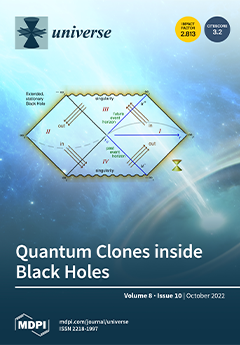In this paper, we study the inflationary scenario in the realm of
k-essence model and swampland conjectures. Taking into account three models of Chaplygin gas, such as generalized, modified, and generalized cosmic Chaplygin gas models, we discuss the equation of state (EoS)
[...] Read more.
In this paper, we study the inflationary scenario in the realm of
k-essence model and swampland conjectures. Taking into account three models of Chaplygin gas, such as generalized, modified, and generalized cosmic Chaplygin gas models, we discuss the equation of state (EoS) parameter
, slow roll parameters
, curvature perturbation
, tensor to scalar ratio
, and scalar spectral index
. As regards the
k-essence model, the coupling function as a function of scalar field
is used. We investigate the swampland conjecture and then find the value of
, i.e., bound of second conjecture for these three models by unifying swampland conjecture and
k-essence. We plot the EoS parameter
, inflationary parameters plane
and bound of swampland conjecture
, which determine that the values of
for each model,
r, are
, and ranges for
are
for generalized, modified, and generalized cosmic Chaplygin gas models, respectively, and compare their compatibility with the Planck data from 2018. Furthermore, we determine the bound for swampland conjecture as
for generalized, modified and generalized cosmic Chaplygin gas models, respectively.
Full article





